- Home
- Mark R. Levin
The Liberty Amendments: Restoring the American Republic Page 2
The Liberty Amendments: Restoring the American Republic Read online
Page 2
Madison’s declarations were not unique among the Constitution’s proponents but rather were commonplace. And without these assurances—and the additional pledge that the First Congress would offer amendments to the Constitution further ensuring that individual and state sovereignty would be safeguarded against the new federal government (what became the Bill of Rights, including the Ninth and Tenth Amendments)—the Constitution would not have been ratified. Thus, the Constitution, drafted by delegates who were sent by the states to Philadelphia in 1787 and ratified subsequently by delegates in the state conventions, preserved the decisive role of the states in the American Republic.
It requires emphasis that the states established the American Republic and, through the Constitution, retained for themselves significant authority to ensure the republic’s durability. This is not to say that the states are perfect governing institutions. Many are no more respectful of unalienable rights than is the federal government. But the issue is how best to preserve the civil society in a world of imperfect people and institutions. The answer, the Framers concluded, is to diversify authority with a combination of governing checks, balances, and divisions, intended to prevent the concentration of unbridled power in the hands of a relative few imperfect people.
• • •
Unlike the modern Statist, who defies, ignores, or rewrites the Constitution for the purpose of evasion, I propose that we, the people, take a closer look at the Constitution for our preservation. The Constitution itself provides the means for restoring self-government and averting societal catastrophe (or, in the case of societal collapse, resurrecting the civil society) in Article V.
Article V sets forth the two processes for amending the Constitution, the second of which I have emphasized in italics:
The Congress, whenever two thirds of both Houses shall deem it necessary, shall propose Amendments to this Constitution, or, on the Application of the Legislatures of two thirds of the several States, shall call a Convention for proposing Amendments, which, in either Case, shall be valid to all Intents and Purposes, as Part of this Constitution, when ratified by the Legislatures of three fourths of the several States or by Conventions in three fourths thereof, as the one or the other Mode of Ratification may be proposed by the Congress . . .21
Importantly, in neither case does the Article V amendment process provide for a constitutional convention. It provides for two methods of amending the Constitution. The first method, where two-thirds of Congress passes a proposed amendment and then forwards it to the state legislatures for possible ratification by three-fourths of the states, has occurred on twenty-seven occasions. The second method, involving the direct application of two-thirds of the state legislatures for a Convention for proposing Amendments, which would thereafter also require a three-fourths ratification vote by the states, has been tried in the past but without success. Today it sits dormant.
The fact is that Article V expressly grants state legislatures significant authority to rebalance the constitutional structure for the purpose of restoring our founding principles should the federal government shed its limitations, abandon its original purpose, and grow too powerful, as many delegates in Philadelphia and the state conventions had worried it might. The idea was first presented at the Constitutional Convention on May 29, 1787, by Edmund Randolph, governor of Virginia, as a proposal in the so-called Virginia Plan drafted by Madison.
Resd. that provision ought to be made for the amendment of the Articles of Union whensoever it shall seem necessary, and that the assent of the National Legislature ought not be required thereto.22
On June 11, George Mason of Virginia—who had earlier drafted Virginia’s Declaration of Rights, the precursor to the Declaration of Independence—responded to some of the delegates who did not see the necessity of the proposal, by strongly advocating for it.
Col: Mason urged the necessity of such a provision. The plan now to be formed will certainly be defective, as the Confederation has been found on trial to be. Amendments therefore will be necessary, and it will be better to provide for them, in any easy, regular and Constitutional way than to trust to chance and violence. It would be improper to require the consent of the Natl Legislature, because they may abuse their power, and refuse their consent on that very account. . . .23
Later, when the delegates returned to the issue, Roger Sherman of Connecticut—who had been a member of the Committee of Five, which helped draft the Declaration of Independence, and who coauthored the so-called Connecticut Plan, which served as the basis for our bicameral Congress—offered an alternative in which Congress would propose amendments and the states would ratify them. Madison suggested dropping the state convention altogether.
On September 15, Mason, alarmed that Congress would have the sole power to propose amendments, continued to insist on state authority to call for conventions. Mason explained that an oppressive Congress would never agree to propose amendments curtailing its own tyranny:
Col: Mason thought the plan of amending the Constitution exceptionable & dangerous. As the proposing of amendments is in both the modes to depend, in the first immediately, and in the second, ultimately, on Congress, no amendments of the proper kind would ever be obtained by the people, if the Government should become oppressive, as he verily believed would be the case.24
Mr. [Gouverneur] Morris [of Pennsylvania] & Mr. [Elbridge] Gerry [of Massachusetts] moved to amend the article so as to require a Convention on application of 2/3 of the Sts [states].25
Earlier, Pennsylvania’s James Wilson, among the most active participants at the Constitutional Convention, had “moved to insert ‘three fourths of’ before the words ‘several States,’ ” which was adopted and then ultimately added as a requirement for both amendment processes under Article V.26 Consequently, under both amendment procedures, the Constitution requires that three-fourths of the states ratify amendments, either by their state legislatures or state conventions.
I was originally skeptical of amending the Constitution by the state convention process. I fretted it could turn into a runaway caucus. As an ardent defender of the Constitution who reveres the brilliance of the Framers, I assumed this would play disastrously into the hands of the Statists. However, today I am a confident and enthusiastic advocate for the process. The text of Article V makes clear that there is a serious check in place. Whether the product of Congress or a convention, a proposed amendment has no effect at all unless “ratified by the Legislatures of three fourths of the several States or by Conventions in three fourths thereof. . . . ” This should extinguish anxiety that the state convention process could hijack the Constitution.
After more research and reflection, the issue crystallized further. If the Framers were alarmed that states calling for a Convention for proposing Amendments could undo the entire undertaking of the Constitutional Convention, then why did they craft, adopt, and endorse the language? In Federalist 43, Madison considered both Article V amendment processes equally prudent and judicious. He wrote, in part, “That useful alterations will be suggested by experience, could not but be foreseen. It was requisite, therefore, that a mode for introducing them should be provided. The mode preferred by the convention seems to be stamped with every mark of propriety. It guards equally against that extreme facility, which would render the Constitution too mutable; and that extreme difficulty, which might perpetuate its discovered faults. It, moreover, equally enables the general and the State governments to originate the amendment of errors, as they may be pointed out by the experience on one side, or on the other. . . . ”27
There are other reasons for assuaging concerns. Robert G. Natelson, a former professor of law at the University of Montana and an expert on the state convention process, explains that “a convention for proposing amendments is a federal convention; it is a creature of the states or, more specifically, of the state legislatures. And it is a limited-purpose convention. It is not designed to set up an entirely new constitution or a new form of government. How
do we know that it’s a federal convention? [It] was the only kind of interstate convention the Founders ever knew, or likely ever considered. Indeed, when they talked during the ratification process about conventions for proposing amendments, they always talked about them as representing the states.”28 Moreover, the state legislatures determine if they want to make application for a convention; the method for selecting their delegates; and the subject matter of the convention.29
In addition, Congress’s role in the state application process is minimal and ministerial. It could not be otherwise, as the Framers and ratifiers adopted the state convention process for the purpose of establishing an alternative to the congressionally initiated amendment process. It provided a constitutional solution should “the [federal] Government . . . become oppressive.”30 The text and plain meaning of Article V are inarguable. In Federalist 85, Alexander Hamilton—a leading advocate of a robust federal government—explained that “the national rulers, whenever nine [two-thirds] States concur, will have no option upon the subject. By the fifth article of the plan, the Congress will be obliged ‘on the application of the legislatures of two thirds of the States [which at present amount to nine], to call a convention for proposing amendments, which shall be valid, to all intents and purposes, as part of the Constitution, when ratified by the legislatures of three fourths of the States, or by conventions in three fourths thereof.’ The words of this article are peremptory. The Congress ‘shall call a convention.’ Nothing in this particular is left to the discretion of that body. And of consequence, all the declamation about the disinclination to a change vanishes in air.”31
I have no illusions about the political difficulty in rallying support for amending the Constitution by this process. After all, all past efforts have fallen short. And the governing masterminds and their disciples are more powerful and strident than ever. There is no doubt that their resistance will be stubborn and their tactics desperate as they unleash the instrumentalities of the federal government and the outlets of a corroboratory media to vanquish such a movement and subdue the public. Having rejected the Constitution’s limits, they will not be persuaded by references to its text and history. Their evasion has been their design. Others who self-identify as originalists, constitutionalists, and conservatives in asserting allegiance to the Constitution, as I do, might nonetheless be wary of or opposed reflexively to the state convention process for several reasons, including their unfamiliarity with its history and workings. Perhaps, in time, their high regard for the Constitution will persuade them of the judiciousness in resorting to it before there is little left of it. Still more may be resigned to a grim future, preferring lamentation to the hard work of purposeful action. And, of course, there are always the unmindful and content.
Whatever the reasons, there are also untold numbers of citizens who comprehend the perilousness of the times and circumstances, and the urgency of drawing the nation’s attention to the restoration of constitutional republicanism. This book is an appeal to them. The Framers anticipated this day might arrive, for they knew that republics deteriorate at first from within. They provided a lawful and civil way to repair what has transpired. We, the people, through our state legislatures—and the state legislatures, acting collectively—have enormous power to constrain the federal government, reestablish self-government, and secure individual sovereignty.
• • •
What follows are proposed amendments to the Constitution—The Liberty Amendments. It is my hope and aspiration for our country that these amendments can spur interest in and, ultimately, support for the state convention process. In any event, should there come a time, sooner or later, when the states convene a convention, these amendments or amendments of the same nature—as I make no claim of unassailable knowledge—may prove useful and find their way into the debate. But a plan is what is needed, as is a first step. This is mine.
CHAPTER TWO
* * *
AN AMENDMENT TO ESTABLISH TERM LIMITS FOR MEMBERS OF CONGRESS
SECTION 1: No person may serve more than twelve years as a member of Congress, whether such service is exclusively in the House or the Senate or combined in both Houses.
SECTION 2: Upon ratification of this Article, any incumbent member of Congress whose term exceeds the twelve-year limit shall complete the current term, but thereafter shall be ineligible for further service as a member of Congress.
IN 2010, THE YEAR of a Republican tidal wave, 85 percent of incumbents from both parties were reelected. Three hundred ninety-seven members of the House of Representatives in the 111th Congress ran for reelection and 339 won. The story in the Senate was almost a mirror image of the House. A third of the seats in the Senate were up for election. Twenty-five incumbents stood for reelection and twenty-one won. The Senate’s incumbent reelection rate was 84 percent.1
In 2008, the year Barack Obama was first elected president, the reelection percentage for House members was 94 percent. The Senate’s was down a hair to 83 percent. In fact, you can look at almost any congressional election cycle in the last two decades and find similar results.2
Ronald Rotunda, Chapman University law professor and constitutional expert, made the point a few years ago that “turnover in the House of Lords has been greater than the turnover in the House of Representatives. There was even more turnover in the membership of the Soviet Politburo.”3 And little has changed since.
In theory, there is nothing wrong with keeping a good public servant in office for as long as the official and we, the voters, want him there. New does not necessarily mean better, and often it can mean worse. And in our country, where the people regularly get to vote for members of the House and Senate—within very basic qualifications like age, citizenship, and residency—whomever voters choose to represent them should be up to them, right?
The problem is that theory can be a cruel mistress when it comes to reality, in which unexpected consequences often prevail. America has never been a pure democracy and majoritarianism has always been as much feared as monarchism. Moreover, our supposedly broad parameters of “choice” at the ballot box have actually caused a dramatic narrowing of electoral options for voters. Putting aside the media histrionics over “divided” government and the “dysfunctional” relationships between the two houses of Congress, these institutions are populated by a class of elected officials who jealously covet the power of public office.
Through gerrymandering of House districts, patronage, a barrage of self-serving free and paid media, and fund-raising advantages, incumbents are able to extend their hold on federal office. Furthermore, incumbents often use their positions as lawmakers to promote federal spending and legal initiatives that benefit their personal longevity in office, making it increasingly difficult for successful electoral challenges. For example, part of the unsustainable growth of the federal government can be attributed to members of Congress treating federal spending, borrowing, and taxing as a personal prerogative used to award funds and assign legal rights to various political and electoral constituencies and would-be constituencies. There are undoubtedly other reasons for their behavior, including and most certainly ideology, but there is no denying that the instrumentalities of the federal government are used to build political constituencies and supporters—that is, to reshape the nature and mind-set of the electorate. Therefore, Congress has become less of a representative body as its members are more insulated.
The consequences of these and other practices addressed by The Liberty Amendments have been extremely detrimental to our society, as measured by, among other things, the ever-more-centralized and coercive power of the federal government, unsustainable fiscal and monetary policies, and myriad statutes and regulations issued by a maze of federal departments and agencies. The ultimate costs are borne by the individual in lost liberties and property. Thus, while there are a host of complex circumstances that brought us to our current state, much of it would not be possible but for an increasingly insulated class of governing ma
sterminds who use lawmaking and the public purse to empower themselves. It is apparent that in Washington and most political capitals TIME in office = POWER.
An important antidote is congressional term limits, which slowly displaces a self-perpetuating ruling class populated by professional politicians—which is increasingly authoritarian in its approach to governance—with a legislative body whose members are, in fact, more representative of the people, for they are rotated in and out of Congress over a generally shorter and defined period of time. University of California, Irvine, professor Mark P. Petracca explains that this rotation of citizen-representatives is central to a republic. “The oft-touted expertise of professional politicians as representatives stands in stark contradiction to the essential function of political representation in a democratic republic, namely, to connect the people to the government through representatives who share their values and stay in touch with the reality of their day-to-day lives.”4 Congressional terms limits alone are not enough to rebalance our governing system, but they are a necessary and critical building block.
Term limits were not included in the Constitution as originally adopted and ratified, but they were recognized commonly as curbing the use and abuse of governmental power at the time of the Constitutional Convention. Benjamin Franklin, the primary author of the Pennsylvania Constitution, included an article preventing anyone from serving in the Pennsylvania General Assembly more than four years out of any seven.5 The twelve-member executive council for the commonwealth also required that members serve no more than one three-year term, and then be off the council for an additional four years.6

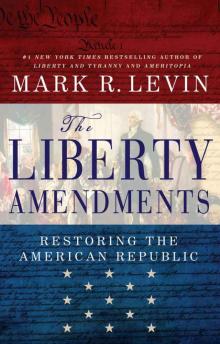 The Liberty Amendments: Restoring the American Republic
The Liberty Amendments: Restoring the American Republic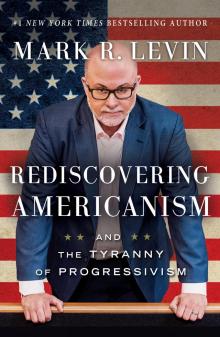 Rediscovering Americanism: And the Tyranny of Progressivism
Rediscovering Americanism: And the Tyranny of Progressivism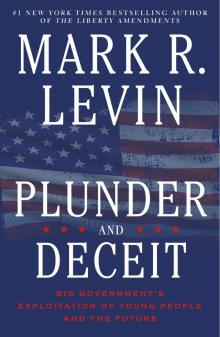 Plunder and Deceit: Big Government's Exploitation of Young People and the Future
Plunder and Deceit: Big Government's Exploitation of Young People and the Future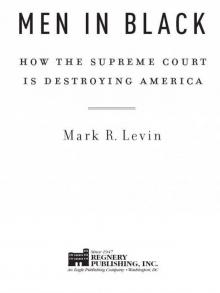 Men in Black: How Judges Are Destroying America
Men in Black: How Judges Are Destroying America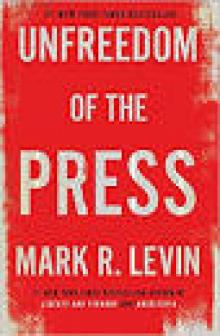 Unfreedom of the Press
Unfreedom of the Press Ameritopia: The Unmaking of America
Ameritopia: The Unmaking of America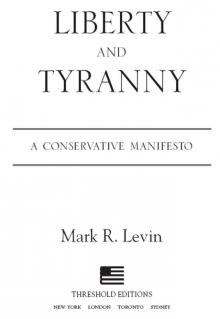 Liberty and Tyranny
Liberty and Tyranny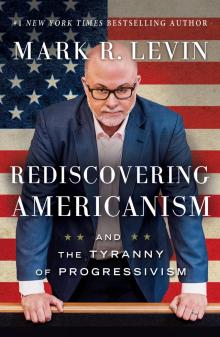 Rediscovering Americanism
Rediscovering Americanism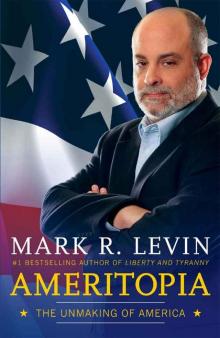 Ameritopia
Ameritopia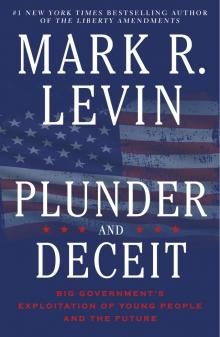 Plunder and Deceit
Plunder and Deceit